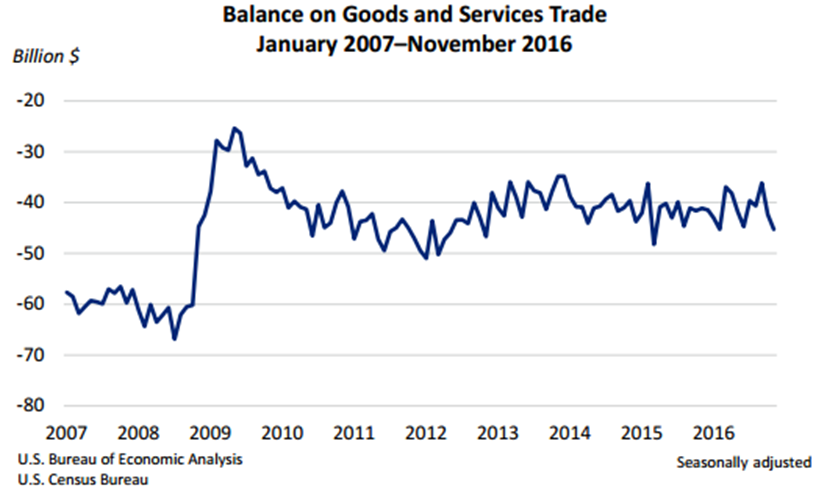

File photo: Shipping cranes and containers at a U.S. port depicting the trade of imports, exports and overall gross domestic product, or GDP. (Photo: REUTERS)
The Commerce Department said the U.S. trade deficit in November widened to $45.2 billion, up $2.9 billion and in the opposite direction of the median forecast. Economists were looking for the U.S. trade deficit to decline to $42.5 billion and it was revised lower for the month of October to $42.4 billion.
The the gain was fueled by an increase in the goods deficit of $3.4 billion to $66.6 billion and an increase in the services surplus of $0.5 billion to $21.4 billion.
The politically-sensitive trade deficit with China recorded the largest spread at $28.4 billion, while the European Union at $13.8 billion was a distant second. The deficit with the European Union increased $0.9 billion to $13.8 billion in November, while Exports decreased $1.3 billion to $21.0 billion and imports decreased $0.4 billion to $34.8 billion.
The real goods deficit increased $3.3 billion to $63.6 billion in November, with real exports of goods decreasing $1.1 billion to $119.4 billion and real imports increasing $2.1 billion to $182.9 billion. The average exports of goods and services decreased $0.7 billion to $187.3 billion and the average imports of goods and services increased $0.8 billion to $228.6 billion.


The remaining U.S. trade deficits were running with countries in the following order: Japan ($5.7 billion), Mexico ($5.7 billion), Germany ($5.3 billion), Canada ($3.2 billion), Italy ($2.2 billion), South Korea ($2.2 billion), OPEC ($1.9 billion), India ($1.8 billion), Taiwan ($1.3 billion), France ($1.3 billion) and Saudi Arabia ($0.2 billion).
The most damning journalistic sin committed by the media during the era of Russia collusion…
The first ecological study finds mask mandates were not effective at slowing the spread of…
On "What Are the Odds?" Monday, Robert Barnes and Rich Baris note how big tech…
On "What Are the Odds?" Monday, Robert Barnes and Rich Baris discuss why America First…
Personal income fell $1,516.6 billion (7.1%) in February, roughly the consensus forecast, while consumer spending…
Research finds those previously infected by or vaccinated against SARS-CoV-2 are not at risk of…
This website uses cookies.